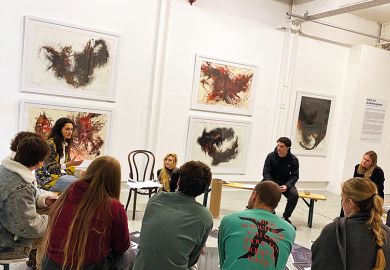Students from poorer backgrounds in the US are outperformed by their middle-class peers because their strategies for learning are “largely ignored” by university faculty, according to new research.
The findings from “The Unwritten Rules of Engagement: Social Class Differences in Undergraduates’ Academic Strategies” confirm that even when students from socio-economically disadvantaged backgrounds are able to access higher education they face further challenges that their more privileged counterparts do not.
April Yee, author of the paper and program officer for the James Irvine Foundation, a Californian philanthropic organisation, interviewed 34 students from a large, diverse, public university before selecting eight for further observation.
She found that all the students understood that they would have to work hard at university, but the learning strategies used by middle-class and “first-generation” students – those from families where neither of their parents had attended university – differed, resulting in different academic outcomes.
“First-generation students believe that they are responsible for earning good grades on their own,” she writes.
“First-generation students employ engagement strategies that emphasise independence while middle-class students…emphasise interaction, in addition to independence. Thus middle-class students are more likely to achieve not because they exert more absolute effort, but because they employ a wider range of strategies.”
She adds that the research, published in the Journal of Higher Education, “points to the role of institutions in defining the implicit rules of engagement, such that middle-class strategies of interaction are recognised and rewarded while first-generation strategies of independence are largely ignored”.
“If [higher education] practitioners wish to promote interactive practices, then they must take responsibility for proactively engaging with students. Faculty must employ interactive teaching methods and establish structured opportunities, such as individual meetings during class time, to connect with all students.”
Dr Yee told Times Higher Education that she suspected her findings would be common throughout the US and globally, particularly at large comprehensive or research universities, where “well-intentioned faculty and administrators are overwhelmed with the number of students they serve and the ‘squeaky wheel gets the oil’”.
She recommended that staff “challenge their own notions about what an engaged student looks like and does”. She also advised bringing student voices into staff's professional development to cultivate their empathy for different students’ experiences.
“All students wanted to be recognised and valued as human beings, as opposed to just being seen as their grades or student ID numbers. They wanted meaningful opportunities to connect with adults on campus,” she said.
“I saw some practitioners that empathised with students and sought to meet them where they were, but that approach was not common. I think that most HEI practitioners, who are typically middle class themselves, expect students to follow the unwritten rules of middle-class engagement.
“One of the key takeaways from my research [is that] disadvantage persists into higher education and thus faculty and administrators must assess how they contribute to the reproduction of inequality. They cannot simply assume that...providing equal opportunity to access HE will automatically translate to equal experiences or outcomes for socio-economically disadvantaged students.”




